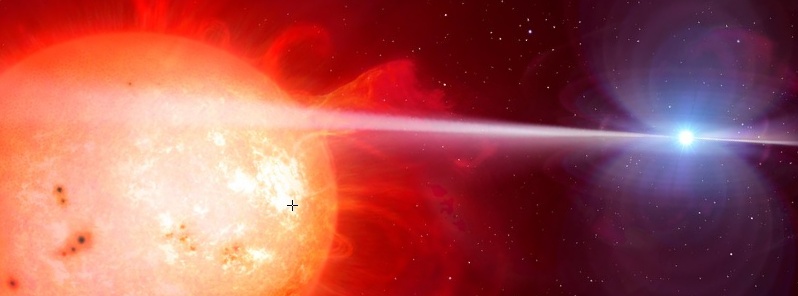Our Sun started its life with a binary companion, new study suggests

A new theory published this week in the AAS' The Astrophysical Journal Letters suggests that our Sun may once have had a binary companion of similar mass. If confirmed, the presence of an early stellar companion increases the likelihood that the Oort cloud was formed as observed and that Planet Nine was captured rather than formed within the solar system.
Harvard University scientists, who published the theory, have postulated that the existence of a long-lost stellar binary companion in the Sun's birth cluster—the collection of stars that formed together with the Sun from the same dense cloud of molecular gas—could explain the formation of the Oort cloud as we observe it today.
"Previous models have had difficulty producing the expected ratio between scattered disk objects and outer Oort cloud objects. It shouldn’t come as a surprise to scientists," said study co-author Amir Siraj. "The binary capture model offers significant improvement and refinement, which is seemingly obvious in retrospect: most Sun-like stars are born with binary companions."
If the Oort cloud was indeed captured with the help of an early stellar companion, the implications for our understanding of the solar system’s formation would be significant. "Binary systems are far more efficient at capturing objects than are single stars," said Dr. Avi Loeb, Professor of Science at Harvard. "If the Oort cloud formed as observed, it would imply that the Sun did in fact have a companion of similar mass that was lost before the Sun left its birth cluster."
The new model also has implications for the hypothesized Planet Nine, which Loeb and Siraj believe isn’t alone out there. "The puzzle is not only regarding the Oort clouds, but also extreme trans-Neptunian objects, like the potential Planet Nine," said Loeb. "It is unclear where they came from, and our new model predicts that there should be more objects with a similar orbital orientation to Planet Nine."
Both the Oort cloud and the proposed location of Planet Nine are so distant from the Sun that direct observation and assessment are challenging for today's researchers. But the Vera C. Rubin Observatory, which sees first light in early 2021, will confirm or deny the existence of Planet Nine and its origins.
"If the VRO verifies the existence of Planet Nine, and a captured origin, and also finds a population of similarly captured dwarf planets, then the binary model will be favored over the lone stellar history that has been long-assumed," Siraj said.
If the Sun did have an early companion that contributed to the formation of the outer solar system, its current absence begs the question: where did it go?
"Passing stars in the birth cluster would have removed the companion from the Sun through their gravitational influence," said Loeb. "Before the loss of the binary, however, the solar system already would have captured its outer envelope of objects, namely the Oort cloud and the Planet Nine population." Siraj added, "The Sun's long-lost companion could now be anywhere in the Milky Way."
Reference:
"The Case for an Early Solar Binary Companion" – Amir Siraj and Abraham, Loeb – The Astrophysical Journal Letters (AAS) – August 18, 2020 – DOI: https://doi.org/10.3847/2041-8213/abac66
Abstract
We show that an equal-mass, temporary binary companion to the Sun in the solar birth cluster at a separation of ~103 au would have increased the likelihood of forming the observed population of outer Oort Cloud objects and of capturing Planet Nine. In particular, the discovery of a captured origin for Planet Nine would favor our binary model by an order of magnitude relative to a lone stellar history. Our model predicts an overabundance of dwarf planets, discoverable by Legacy Survey of Space and Time, with similar orbits to Planet Nine, which would result from capture by the stellar binary.
Featured image credit: M. Garlick/University of Warwick/ESO

Our binary sun (Nemesis) is located 18.73 times the distance from the sun to Pluto
at an 11 degrees from the ecliptic towards the Orion constellation.Due to the attraction and repulsion forces at play, that is where it will stay.
Nibiru/ planet x /wormwood/the 12th planet will be seen by January 2021.
I recommend checking out poleshift.ning.com
This article is hocus pocus science like all astrophysics. The sun still has a companion and very soon it will be seen by the people of the whole world. Our galaxy alone consists of over 60% of the so-called red and brown dwarfs. These dark astronomical objects and bodies have very dense masses and very strong magnetic field. For instance, the strength of the magnetic field of the companion of our star is comparable with the strength of the magnetic field surrounding sunspots. Make no doubt about it, the star formation theory is a complete rubbish and the so-called dark matter is actually the masses of all the dark astronomical objects and bodies that make up the absolute majority of the mass of the Universe